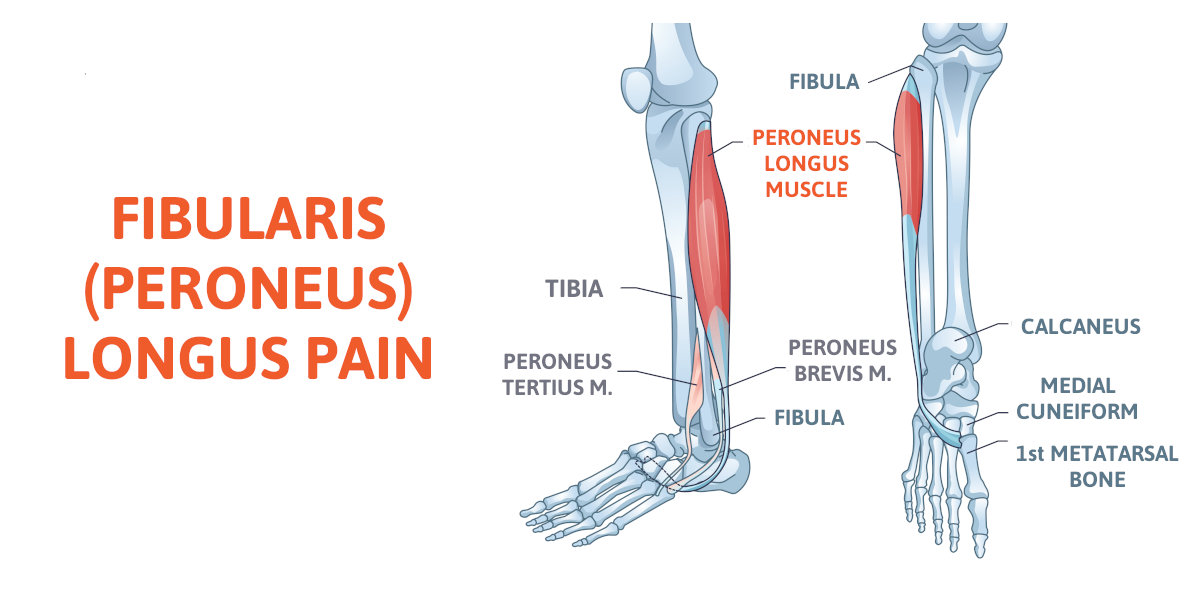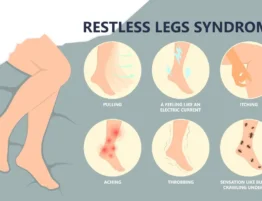

Anatomy -The fibularis longus muscle is one of two muscles that help support the ankle joint on the outside of the ankle. The other muscle is fibularis brevis. The fibularis longus and brevis may also be referred to as the peroneus longus and the peroneus brevis. Both of the peroneal muscles originate on the outside of the leg and extend down towards the ankle. At the level of the ankle joint they become tendons and act like stirrups around your ankle. Their function is to stabilize your ankle from moving side to side. The fibularis longus also helps to support the arches of the foot. When you activate these muscles, the foot will be pulled away from the opposite foot. When you have pain of the fibularis longus it is usually the tendon around the ankle and foot rather then the muscle portion that extends up into the lower leg.
Tendonitis versus tendinosis versus tendon tear.
When evaluated for this problem it’s important to establish which one of these conditions you have
- Tendonitis – this simple means the tendon is inflamed and occurs early in the process.
- Tendinosis -This means that the tendon is damaged and may have small tears within the tendon.
- Tear – This is the most advanced presentation. There is an obvious tear and usually extends along the length of the tendon.
Where is the pain located – Both the fibularis longus and brevis run along the outside of the ankle posterior to the lateral malleolus. See diagram below.
When there is pain it will be located along the outside of your foot and ankle by your heel bone and may extend up towards the outside of the ankle just behind the fibula. There will be pain and swelling along the length of the tendon.
What is the cause of fibularis longus pain?
- Overuse – simply doing too much too soon.
- Activity on uneven surfaces – because these tendons support the ankle from moving side to side walking on irregular terrain will overuse the tendons. Also, activities like tennis, pickleball and skiing require side to side motion and are more likely to stress the tendons.
- Trauma – when a ankle sprain may cause peroneal tendon injuries. As most ankle sprains involve rolling onto the outside of the foot injury may occur. The severe forces generated can cause pain to persist in this area even after the pain from the ankle sprain no longer exists.
- Foot types – certain foot types may make you more prone to overuse of the tendons. This could include severe flat feet but also very high arched feet.
- Shoe gear – you may be wearing shoes that are worn down or do not offer enough support.
How do we evaluate and diagnosis?
- History – getting a good history from the patient is important. Was there an injury, how long have you had the problem, have you recently changed your activities. What have you tried.
- Location of the pain – The physical examination is very important. Usually there will be pain and swelling along the tendon.
- Diagnostic ultrasound – we can evaluate the tendon by using ultrasound to look for tears or inflammation along the tendon
- X-rays – They may be used to rule out bone problems that could mimic or be associated with pain.
- MRI – This is very useful to confirm whether there is a tear and its severity.
Treatments for fibularis longus pain
- Rest and immobilization – in acute situations where the pain is very recent and there is no apparent tear using a Cam walker to minimize motion in the area can help.
- Anti inflammatory medications – These may be helpful especially if in the acute stages.
- Orthotics – custom made inserts can be very helpful as they will help support the foot from moving side o side and therefore eliminate the pain.
- Physical therapy – using modalities such as ultrasound may also help Stretching and mobilization exercises may also be used.
- Laser treatment – We use a very effective laser called MLS laser which is also used as part of a treatment plan.
- Surgery – if there is a tear and conservative treatments fail this can be very successful. It will require lay up of at least four weeks of immobilization.
- Regenerative medicine – using stem cell treatments has been very successful and has greatly reduced, almost eliminated the need for surgery for many of our patients. This will aid in reducing inflammation and repairing the tendon. Patients are in Cam walker for four weeks and can walk.
The dangers of not knowing if you have a tear
The most important thing to understand is that the majority of fibularis longus pain may not be from tendonitis with tendon inflammation but rather tendinosis. Tendons tend to have less blood supply than other structures. So when they become over stressed microtears may occur. So its very important to know if this is taking place. How do we know if the tendons inflamed or breaking down. MRI is the answer.
The dangers of physcial therapy without proper evaluation
How does treating a tear differ from tendonitis. If the patient has a tear that physical therapy with the potential for stretching would not be advisable. This could further injure the tendon. I’ve seen this in practice. Patients are going to physical therapy and peroneal tendonitis was diagnosed because of pain alone the tendon. The physcial therapist may recommend stretching and putting the ankle area and the tendon through ranges of motion that could further damage the tendon. The problem is made worse. If they had known there was a tear the option of regenerative medicine would be considered, and the possibility of surgery reduced.
What is the Recovery Time for Peroneal Tendonitis?
The recovery time for peroneal tendonitis varies depending on the severity of the condition and the effectiveness of the treatment. Generally, with proper rest, physical therapy, and treatment, mild to moderate cases of peroneal tendonitis may take about 4 to 6 weeks to heal.
For more severe cases, or if there has been chronic damage to the tendons, recovery could take several months, potentially 3 to 6 months, especially if surgery is required. Early diagnosis and adherence to a treatment plan, including rest, ice, compression, elevation (RICE), physical therapy, and possibly orthotics or bracing, can help speed up the recovery process.
What are some Exercises one can do if they have Peroneal Tendonitis?
If you have peroneal tendonitis, gentle exercises can help strengthen the tendons and support recovery. Here are some exercises that are commonly recommended:
- Ankle Circles
- How to Do It: Sit with your leg extended and slowly rotate your ankle in a circular motion. Make sure to go in both clockwise and counterclockwise directions.
- Repetitions: 10-15 circles in each direction.
- Benefit: Improves range of motion and reduces stiffness.
- Towel Stretch
- How to Do It: Sit with your leg extended, loop a towel around the ball of your foot, and gently pull the towel towards you, keeping your leg straight.
- Hold: 15-30 seconds.
- Repetitions: 2-3 times.
- Benefit: Stretches the calf muscles and Achilles tendon, which can help reduce strain on the peroneal tendons.
- Calf Raises
- How to Do It: Stand with your feet shoulder-width apart and slowly rise up onto the balls of your feet, then lower back down.
- Repetitions: 10-15 repetitions, 2-3 sets.
- Benefit: Strengthens the calf muscles, which support the peroneal tendons.
- Resistance Band Eversion
- How to Do It: Sit down and secure a resistance band around your foot. Hold the other end with your hand or attach it to a stable object. Slowly move your foot outward against the resistance of the band.
- Repetitions: 10-15 repetitions, 2-3 sets.
- Benefit: Strengthens the peroneal muscles, which helps stabilize the ankle.
- Heel-to-Toe Walking
- How to Do It: Walk in a straight line by placing the heel of one foot directly in front of the toes of the other foot. Keep your balance and move slowly.
- Distance: Walk 10-15 feet, 2-3 times.
- Benefit: Improves balance and strengthens the muscles around the ankle.
- Balance Exercises
- How to Do It: Stand on one leg with your eyes open and hold for 30 seconds. As you progress, try closing your eyes or standing on an unstable surface like a cushion.
- Repetitions: 2-3 times on each leg.
- Benefit: Enhances ankle stability and proprioception.
- Alphabet Exercise
- How to Do It: While sitting, lift your foot off the ground and try to “draw” the letters of the alphabet in the air with your toes.
- Benefit: Increases ankle mobility and reduces stiffness.
Note: Before starting any exercise program, it’s important to consult with your physical therapist to ensure the exercises are appropriate for your specific condition and won’t exacerbate your symptoms. Start slowly, and if you experience any pain during these exercises, stop immediately and consult a podiatrist near you.
So if you’re having pain on the outside of your ankle or foot consider fibularis longus pain as a possibility. Early evaluation and treatment for peroneal tendonitis is needed. Proper evaluation is also important as a tear (tendinosis) versus inflammation (tendonitis) are treated differently. Make sure you consider seeing a foot specialist and consider getting an MRI if you’re not getting better.
Give us a call to talk to your certified and experience local foot doctor in Fort Collins and Broomfield, Colorado.










Write a comment: